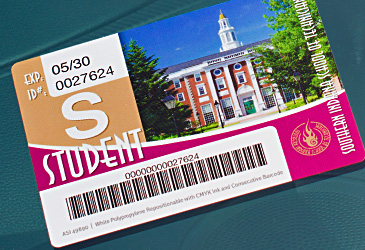
Consecutive number labels once required letterpresses that printed one a time. Today, digital printing quickly fulfills many needs using a wide selection of inks, stocks, shapes, adhesives, and sizes. Add variable data options to change up text and/or graphics.
It’s a numbers game
Seven Discount Labels presses have consecutive number and consecutive barcode capabilities, meaning that your printing wishes are our command on-demand. From consecutive number parking permits to event tickets, we can round ‘em up and send ‘em out typically in a couple days. We can print any type of number and start the sequence at any number. These labels also can be finished in a stack on request. Where needed, weatherproof labels feature durable vinyl, polypropylene or polyester stocks.
While some uses are obvious, others may be less so. For example, consecutive barcode labels including QR code capabilities can meet such needs as inventory control, order tracking and production control in a variety of industries, including warehousing, distribution, medical and retail. Standard consecutive barcodes include: Code 3 of 9, code 2 of 5, Codabar and Code 128. We can create the barcode for these formats (including QR codes) with the human readable number.
Play with the possibilities
Use consecutive number labels to offer ideas to your customers that can notch up product interest and influence. Here are a few examples:
- Limited edition labels. Add a whole new dimension of creativity and attraction to product labels by creating different works of art featured on various packages, complete with consecutive numbering. Your customers’ customers can be encouraged to collect all the “limited edition” pieces, complete with their own special number (e.g., 1 of 500). This can become a collector’s item in its own right and/or be used to redeem a prize when meeting a particular threshold (e.g., proof of purchase of one each of the “collection”);
- Promotion featuring consecutive number “scoring.” Develop a contest where product purchasers get credit for each item purchased. Numbers closest to 1 provide more incentive to buy early. When they reach a particular milestone, buyers get free products or some other perk;
- Contest using consecutive number as a “raffle.” Random numbers are selected to award prizes to product purchasers. Unlike contest approaches where the chances of winning are relatively slim, make prizes relatively easy and attractive so that people will buy in part to have a shot of winning something they value.
As with so many printing processes and choices, consecutive numbering—especially in tandem with variable data—offers many ways to rev up your profits by revving up customer interest.
